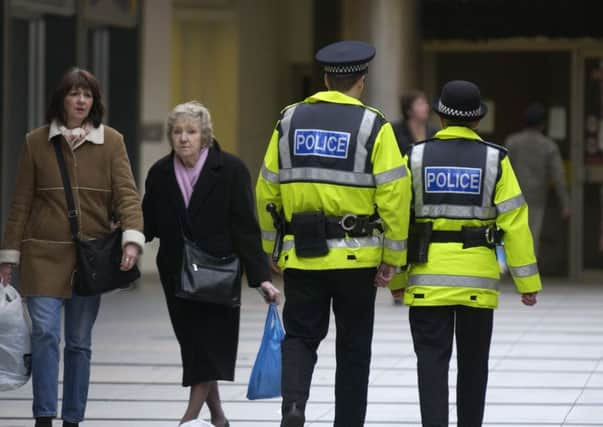Chris Marshall: Statistics don't tell the full story


Reading some of the media coverage of Police Scotland’s annual dump of reported crime statistics, you would be forgiven for thinking violence is a thing of the past. Overall recorded crime may be down by 3.2 per cent – but try telling that to the 293 people subjected to a murder attempt during the past year, or the more than 3,000 victims of a serious assault.
Indeed, while the number of murders is now at the lowest level recorded since 1976, crimes of violence increased by more than 5 per cent in 2015-16. That includes a 10 per cent increase in attempted murders and a 24 per cent increase in serious assaults.
Advertisement
Hide AdAdvertisement
Hide AdAnd despite valuable work done by the Violence Reduction Unit and others to stop young men carrying knives, there has been a 3 per cent rise in offences of handling a bladed weapon.
Perhaps the biggest worry, however, is what the statistics don’t tell us.
Appearing before the Scottish Police Authority following publication of the figures, Chief Constable Phil Gormley admitted his force continues to struggle to quantify the level of cybercrime taking place.
Police have been saying for some time now that a drop in some traditional offences has been met with a corresponding rise in online crime as criminals adapt their tactics to the digital age.
Mr Gormley warned of “scamming on an industrial scale”, yet there is no note of this in the data released on Monday. The only mention was in a press release accompanying the statistics, which said the emergence of cybercrime was being “closely monitored”.
Drawing firm conclusions from crime statistics is a messy business. In fact, it’s so complex as to render the whole exercise almost meaningless.
For every positive index – an 11 per cent fall in robberies or an 8 per cent in crimes of dishonesty, for example – there’s another which is negative, such as the 6 per cent rise in sexual crime or a 4 per cent increase in fire-raising and malicious mischief.
Nevertheless, the statistics on violent crime do warrant closer scrutiny.
Advertisement
Hide AdAdvertisement
Hide AdThe Scottish Government has become well used to telling us all that recorded crime is at a 40-year low.
It’s true that the government’s own figures – which are separate from those collated by the police – show crime levels not seen since the mid-1970s. But as Police Scotland’s recorded crime figures show, there is room for a good deal of nuance within that.
With the exception of the murder rate, many of the indices on violent crime appear to be heading in the wrong direction.
That will be a worry for a cash-strapped police force which has already hinted that it will need to cut its cloth to reflect the growing financial challenges it faces.
The other great unknown remains the sheer amount of crime being carried out online, much of which goes unreported.
Fraud and blackmail are rife on the internet, but even the police do not know how much of that gets back to them.
It’s likely more and more police time will be required to deal with this sort of crime, as well as the massive increase in online child abuse witnessed over the past few years.
While we should all welcome a fall in the overall level of crime, it’s simply too early for us to begin resting on our laurels.